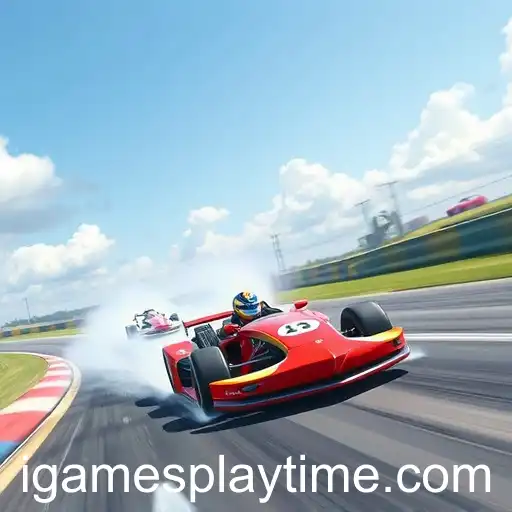Racing games have long been a staple in the video game industry, capturing the hearts of players with their blend of speed, strategy, and intense competition. Since the inception of video gaming, the allure of virtual racing has continued to grow, evolving into a sophisticated genre that offers players not only an escape from reality but also a platform to test their skills against the best in the world.
At the core of racing games is the concept of 'games playtime' – a metric that determines how long players are engaged in the game, often directly correlating with the game's success and the player's enjoyment. Unlike other genres that might capture a player's attention for short bursts, racing games often boast prolonged engagement due to their dynamic nature and endless variety.
One of the key elements contributing to the extended playtime of racing games is their diverse modes and customizable settings. Whether it's taking on a career mode where players climb through the ranks, or engaging in quick races for a casual and immediate thrill, there’s something for everyone. Additionally, the ability to customize vehicles not only in terms of appearance but also performance attributes, adds another layer of depth and personalization to the gaming experience.
Online multiplayer modes have revolutionized racing games, allowing gamers to compete against each other in real-time, thus vastly increasing the 'games playtime'. The competitive nature of these modes encourages players to improve their skills and climb leaderboards, while also fostering vibrant communities around popular titles. Moreover, seasonal events and challenges introduced by developers keep the content fresh and players coming back for more.
The simulation vs. arcade debate is another interesting aspect of racing games that affects playtime. Simulation racers, like the Gran Turismo or Forza Motorsport series, emphasize realism and precision, appealing to enthusiasts who relish the intricacies of car handling physics and real-world automotive culture. On the other hand, arcade racers, such as Mario Kart or Need for Speed, prioritize fun and accessibility, ensuring that even casual gamers can enjoy a thrilling experience.
Graphics and audio design play pivotal roles in enhancing the immersive experience of racing games. With the advancement of technology, modern racing games boast photorealistic visuals and lifelike soundscapes that transport players right into the heart of the action. The resolution of tracks, the minutiae of car models, and the roar of engines work in synergy to augment the player’s sense of presence on the track.
In conclusion, racing games have evolved significantly, becoming more than just digital circuits for high-speed chases. They are complex ecosystems where players can invest countless hours unlocking new cars, mastering tracks, and optimizing race strategies. With developers constantly pushing the boundaries, the future seems bright for this exhilarating genre that continues to captivate millions around the globe.

Explore the exhilarating realm of racing games, where players experience the adrenaline rush of high-speed races and the depth of strategic gameplay.




